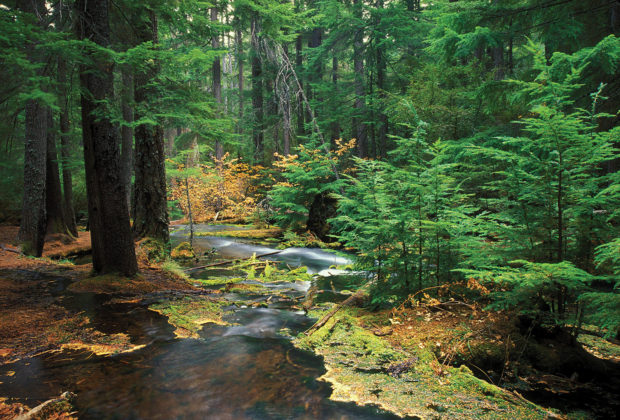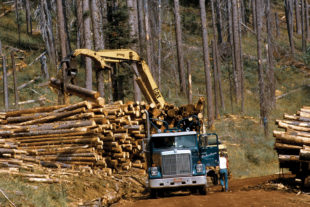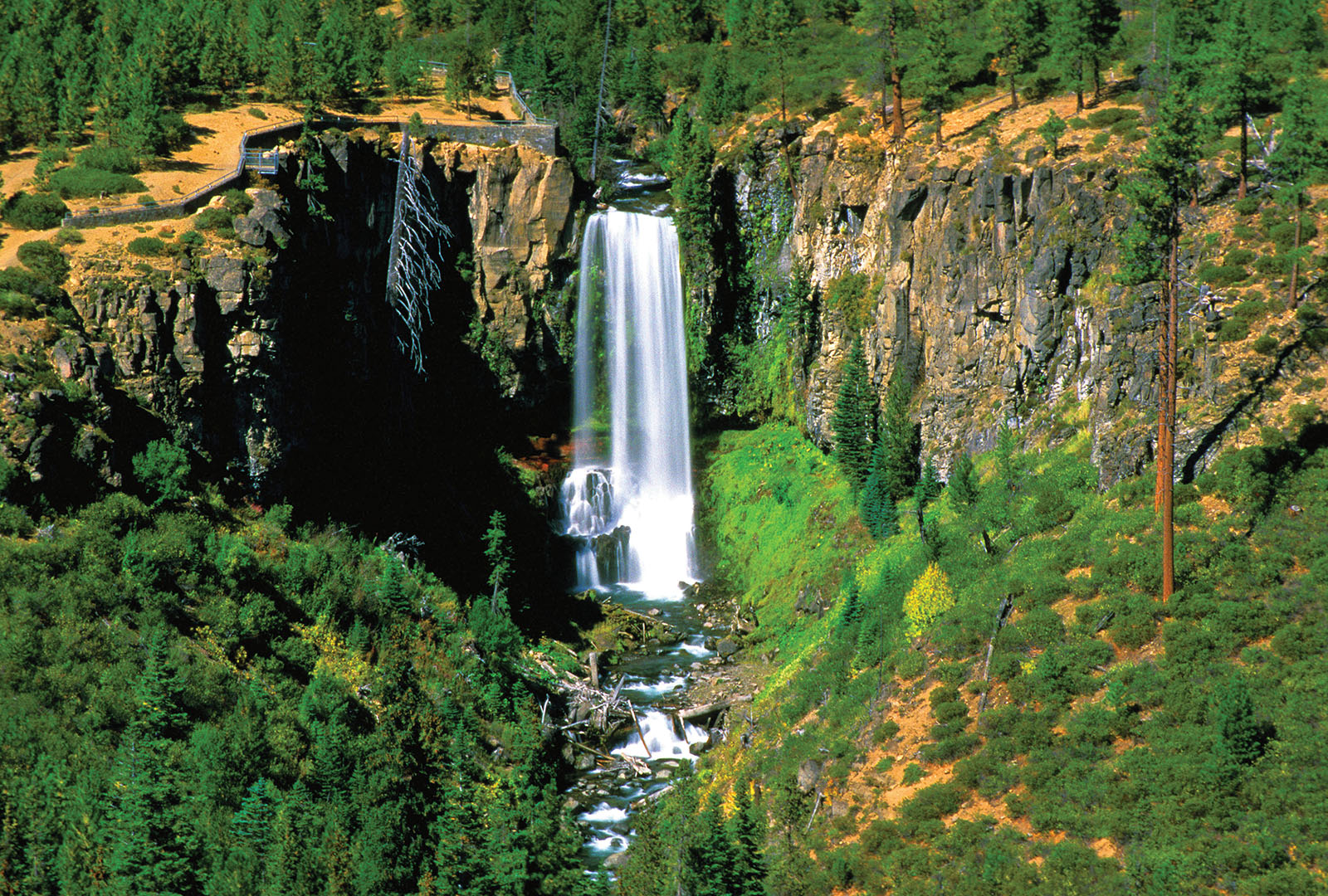When Congress passed the 2009 Omnibus Public Land Management Act, one of Barack Obama’s major public lands initiatives, it included a provision for a new program of management of national forests that promised “collaborative, science-based ecosystem restoration” of what were deemed “priority forest landscapes.” In a speech announcing the founding of the Collaborative Forest Landscape Restoration Program (CFLRP), which was funded at $40 million annually through 2019, Tom Vilsack, Obama’s secretary of agriculture, warned that “the effects of our changing climate have resulted in an increasing number of catastrophic wildfires and insect outbreaks.” It was time “for a change in the way we view and manage America’s forestlands with an eye towards the future.” Vilsack said the CFLRP offered “a new approach that engages the American people” in conserving the national forests.
On its face, collaboration was an attractive model for green groups who hadn’t the stomach for fighting industry. The CFLRP trumpeted that conservationists and the Forest Service working together would find “consensus” on environmental issues. Under this new paradigm, the greens opted to abandon the most effective historical means to compel public lands regulators to follow the law — litigation — in order to build “working groups” of “local stakeholders.” Their goal was harmonious relations with the despoilers, to the point that the loggers and enviros, as the collabo-greens liked to say, “can go out for a beer at the end of the day.” Tasked with drafting management recommendations, each collaborative would labor together on issues in specific national forest areas to advise the agency on policy. The ultimate function of these collaboratives, as we will see, was to greenwash development of the forests for private industry profit.
This intention was no secret at the Forest Service, where for years the collaborative model had been percolating. “When local environmental groups and timber representatives learn to reach consensus,” said former Forest Service Chief Jack Ward Thomas in 1997, “that will marginalize extremists.” The “extremists,” as a former assistant secretary of the Department of the Interior under George W. Bush put it in 2002, were “the people who want to litigate.” Within a year of the establishment of the CFLRP, two former biologists at the Forest Service who had witnessed the program in action, Al Espinosa and Harry Jageman, drafted a letter to Congress to air their concerns about it. They wrote to Sen. Maria Cantwell, the ranking Democrat on the Committee on Energy and Natural Resources, to warn that collaboration was “being used to circumvent existing environmental laws and give control of the management of our National Forests to local special interests.”
One of the working groups established under the CFLRP was the Deschutes Collaborative Forest Project, its area of claimed expertise was the 1.8-million-acre Deschutes National Forest in Oregon’s Cascade Range, west of Bend. George Wuerthner, an ecologist and author in Bend, began attending the open meetings of the Deschutes collaborationists in 2012. The group, totaling about 25 people, boasted of the ecumenical approach to public lands management, the joining of seemingly antagonistic parties. “We are environmentalists, businesspeople, professional foresters, loggers, outdoors lovers, private landowners, elected officials, tribal members and government policymakers.” The stated ambition in this singing of “Kumbaya” was to “restore our forests to a healthier, more resilient condition through balanced, science-driven restoration projects.” Deschutes typified the groups funded under the CFLRP.
From the outset Wuerthner had a bad taste in his mouth. Over the course of his career as a journalist and activist, he had edited or authored dozens of books on the myriad environmental threats and crises facing the public lands, everything from logging, wildfire management, grazing, and roading to biodiversity collapse and the depredations of the energy industry. (Wuerthner, who is in his early seventies, briefly worked for the BLM as a young man; his exposés of the public lands livestock industry first prompted me to look at the ecological catastrophe of grazing.) Lately, he had taken an interest in wildfire ecology, and he brought this knowledge to the meetings of the Deschutes collaborative. “It quickly became clear that the group was buying the crap about how logging would restore the forest and preclude wildfires,” Wuerthner told me.
The environmentalists in the collaborative, in Wuerthner’s account, had little understanding of fire. They nodded along as representatives from the Forest Service and timber companies dominated the discussions. Week after week, month after month, the Deschutes collaborationists met. Ecologists under the pay of the Forest Service were given long hours for presentations that favored logging. Independent ecologists with differing ideas were not welcomed, told repeatedly this wasn’t the place to ask troublesome questions. The Deschutes group predicated its discussions on the assumption that the national forests, threatened with wildfire, were “sick” and needed to be “treated.” Were the forests actually sick? No matter. The point of the interminable meetings and the questionable science was to agree always on the need for more logging. If you cared about ecological health, if you questioned the cutting of trees, you were sidelined. Wuerthner did not stay quiet about what he saw. “The Deschutes Collaborative,” he wrote in a September 2018 op-ed in the Bend Bulletin, was “degrading our forest ecosystems.”

An unlogged area protects freshwater resources in Deschutes National Forest, where ecologist George Wuerthner observed that the Deschutes Collaborative was “degrading our forest ecosystems.” (Forest Service photo).
In the hydra-headed complex of collaboratives that the CFLRP spawned across the West, it wasn’t hard to find whistleblowers who had seen collabo operations from the inside. I talked, for example, with Karen Coulter, who participated, to her regret, in the Ochoco Forest Restoration Collaborative and the Blue Mountains Forest Partners collaborative in eastern Oregon. Coulter, who co-founded the nonprofit Blue Mountains Biodiversity Project in 1991, wrote me an account of her experience. The Forest Service, she said, “was using the collaborative process to rubberstamp their greatly escalated pace and scale of heavy logging over tens of thousands of acres.” She said that “local rural communities” were “desperate for jobs, so it was all too easy for the Forest Service to control the collaborative process under the guise of agency expertise, playing on the public’s fear of fire and using ‘logging reduces fire risk’ and ‘logging is restoration’ rhetoric.”
Echoing Wuerthner, Coulter told me that collaboration members who represented environmental groups “lacked on-the-ground field experience,” “bought into the Forest Service narrative without being familiar with the local ecosystems,” and accepted the service’s “limited and biased selection of science at face value without investigating the full range of the best available science.” Outdated assumptions about logging and wildfire, she told me, were used to convince the enviros in the collaborative to support massive timber sales under the veil of “ecological restoration” that was “actually highly destructive.” Crucially, the Forest Service was “not disclosing or analyzing a growing body of science that refutes most of their assumptions.”
Another one-time participant in CFLRP collaboratives in Idaho, Barry Rosenberg, who as an independent activist had been filing legal challenges to Forest Service logging projects since the early 1980s, told me, “These collaboratively approved timber sales have nothing to do with ‘forest health,’ but are all about jobs and corporate wealth.” Rosenberg said that the collaborative movement that began with the CFLRP was “a significant contributor to the most catastrophic Forest Service logging program that I have witnessed in 37 years as a forest advocate.”
Sens. Jeff Merkley and Ron Wyden, the Democrats from Oregon, have been some of the staunchest supporters of the CFLRP in Congress. Merkley cited his visits to the Deschutes National Forest as proof positive of “the valuable progress that is made when communities work together to manage our forests.” (George Wuerthner sent me a photo of the Deschutes, “so you can see the kind of sanitized and impoverished forests that Merkley is glowingly talking about.”) The Democratic senators boasted of the 23 CFLRP projects in 14 states that they claimed had produced more than 2.5 billion board feet of lumber and $1.4 billion in local labor income. They did not mention that the right-wing, pro-extractionist, anti-conservation Western Governors’ Association also publicly backed the CFLRP — which should tell you how bad for the land the collaborationist program really is. CFLRP proponents asserted proudly that logging facilitated under the program had reduced the risk of megafires on almost 3 million acres. This was a lie. There was no evidence of it whatsoever.
**
To figure out what was really going on with the CFLRP meant following the money, and for that I called up a former logger turned public lands activist named Keith Hammer. Hammer had been a tree feller and chainsaw operator for a timber outfit during the 1970s and worked briefly for the Forest Service doing trail maintenance. At once curious about the collabos and disgusted with them, Hammer took it upon himself to investigate the financial incentives of environmental groups in the collaborationist game. His report, self-published in 2015 as a pamphlet, was a devastating indictment. It turns out that collaborationists operate under a system of generous tax-dollar-funded reimbursements from the Forest Service through their participation in the CFLRP. To Hammer it looked like systematized, legalized corruption.
Let’s say you’re a member of a group we’ll call the Southern Crown Umbrella Movement (SCUM) advocating for the bioregion known as the Southern Crown of the Continent, which encompasses the spine of the Rocky Mountains in Montana, Idaho, and Wyoming. (It’s a real thing, the bioregion of the Crown of the Continent, though SCUM is not.) You’re a member of SCUM, and you participate in a collaborative with the Forest Service. You put in time for meetings of the collaborative — long endless meetings full of parleys, seeking of consensus, sharing of concerns, always with the goal that everyone gets along and at the end of the day a beer is shared. You go out in the field to look at areas to be “thinned” and “restored.” Maybe you do some field monitoring of conditions in the area where the loggers will operate, check out stream conditions, examine roads that might be decommissioned to prevent the sedimentation of streams. These are in-kind, non-cash donations that you as a member of SCUM provide to the collaborative. You put in your invoice. And behold, the Forest Service, via the CFLRP, will reimburse SCUM up to four times the value of the donated time and effort. According to Hammer, one nonprofit, Trout Unlimited, received $2.5 million in federal funds for its non-cash, in-kind contributions of $903,000 under the CFLRP.
Green groups that ride this gravy train seldom if ever criticize the Forest Service or object to its timber sales for fear of being denied payments in future collaborative projects, for it is obvious that taking a stand against logging would dry up the federal money stream fattening the groups. In short, this is a system by which the government is essentially turning nongovernmental organizations (NGOs) into federal contractors. Via the CFLRP and collaboration, the Forest Service gets to groom and select its contractors while maintaining the illusion that these are examples of nonprofit public support. For you see, in the public eye, these are independent NGOs that just happen to support the Forest Service on behalf of the public environmental interest, when they are in fact on the Forest Service payroll. What’s really going on here is Congress dividing and conquering the environmental movement, literally purchasing segments of it with CFLRP money. Get those groups dependent on federal dollars, then watch them condemn other enviros for refusing to rubberstamp the Forest Service agenda of “restoring” the forests for the timber industry.
**
On an autumn day a few years ago, a man named Dick Walker waited on a runway in Orofino, Idaho, with his Cessna single-prop to take me for a bird’s-eye look at logging in the Nez Perce-Clearwater National Forest. With Walker was Gary Macfarlane, the executive director of a nonprofit in Idaho called Friends of the Clearwater, who had arranged the flight. Macfarlane, soft-spoken and ponytailed, had been a forest activist since the 1990s, participating in direct actions against the Forest Service and logging companies that included getting himself arrested for blockading roads on public lands.
We ascended over the vast forest district, which covers some 4 million acres. It was a landscape of rugged hills, folded ridges, and deep ravines, but everywhere its pine and fir forests were mottled with logging cuts of various ages that resembled mange on a sleeping green giant. Some of the logged areas were recovering from decades ago, the trees young and short, and some were new, stripped clean of life.
“Jesus,” said Walker. “They’ve hit this country hard.” I asked about his experience in the Forest Service, where he started working in 1962, first as a fire lookout and then as a forester, meaning he identified trees for cutting. He quit after just a few years, appalled at the service’s views of forests as mere timber farms. Walker reiterated what so many former Forest Service employees had told me. “Almost everything we do in forestry management is for the economic now, maximum income,” said Walker, “not timber growth, and certainly not protecting wilderness.”

Despite the beauty of the landscape in the Nez Perce-Clearwater National Forest, a patchwork of light and dark green reveals significant logging activity. The lighter green areas have been logged more recently (photo by Edward Capovani).
Walker banked the plane north and east, further into the reaches of the forest, where beyond the cuts there were still hundreds of thousands of acres of unlogged old-growth forest, where there were no roads, where the streams ran clear of sediment. “This is the best of the best of forest habitat remaining in the Lower 48,” Macfarlane told me. Outside of Alaska, it was one of the last redoubts of spawning grounds for genetically pure steelhead trout, and though scientists were uncertain of it, for the last of the genetically pure Chinook salmon runs. It was where black bears, lynx, wolverines, pine martens, and fishers had healthy wild habitat.
Over 100,000 acres of it — roughly a billion board feet — was proposed to be roaded and logged for projects developed by the Forest Service and a collaborationist group called the Clearwater Basin Collaborative (CBC). The CBC’s members included representatives from the Nature Conservancy, the Wilderness Society, and the Idaho Conservation League. When retired Forest Service biologists Espinosa and Jageman laid out the broad problems of collaboration in their 2010 letter to Senator Cantwell, they focused their concerns on the CBC. The two biologists had spent much of their careers in the Nez Perce-Clearwater trying to preserve fish and wildlife habitat, and they regarded the CBC as a direct threat to land they had come to love. The group, they said, offered “a lot of flowery language about restoration, fire prevention, rural community protection, and fish and wildlife habitat improvement,” language which they interpreted as “code-speak for taxpayer-subsidized logging.” They charged that the CBC operated in secrecy, “outside of the ‘public eye,’” with “no public meetings, newspaper announcements or any other public notification regarding any of their work.” About its intentions for the Clearwater, however, the CBC was hardly secretive. In its own literature it stated one of the chief goals of the group was “to work administratively to significantly increase the amount of timber being harvested within the Clearwater Basin.”

In Deschutes National Forest, logs from “timber-salvage” logging are loaded for transport to sawmills (Forest Service photo).
Espinosa and Jageman worried that the CBC, as a creature of the Forest Service crafting policy in back rooms, was operating in violation of two of the most important laws governing national forest policy, the National Environmental Policy Act of 1969 and the National Forest Management Act of 1976. NFMA and NEPA mandated that the Forest Service open its land management decision-making process to broad public participation and comment. In 2011, Gary Macfarlane petitioned Agriculture Secretary Vilsack to investigate the CBC. He alleged that the CBC operated “in clear violation of the public trust by catering to special interest groups.” Vilsack did not respond (nor did Sen. Cantwell ever answer Espinosa and Jageman’s entreaty).
“We already have a public democratic process for overseeing the national forests, and that’s through NEPA and NFMA,” Macfarlane told me. He described the collaborationist movement as “part of a neoliberal agenda” — but one that has proceeded under a green cover. “Collaboration is a devolution of public lands management to local vested economic interests. Its real end,” he told me, “is privatization.”
Christopher Ketcham has been a freelance journalist for more than 20 years, publishing in Harper’s, National Geographic, The New Republic, and many other magazines and websites. This Land: How Cowboys, Capitalism, and Corruption are Ruining the American West was published in 2019 and is the product of 10 years of sojourning and research on the public lands of the American West.


